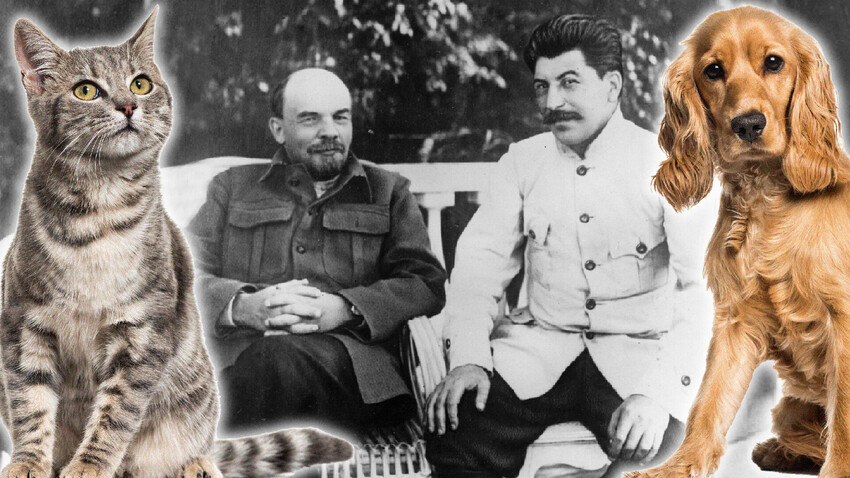
Lenin had a number of pets during his lifetime, both cats and dogs. Nothing is known about most of them, but a couple of pets did go down in history. Because of his passion for hunting, Lenin took in a red setter named Zhenka when it was a puppy. The revolutionary leader even sent off for a special instruction manual on the proper rearing of dogs and personally trained the puppy.
In the 1920s, when Lenin was already ill, he spent a lot of time with animals - he found them a help in relieving stress. The photo shows Lenin in 1922 at his estate in Gorki with a dog named Ayda.
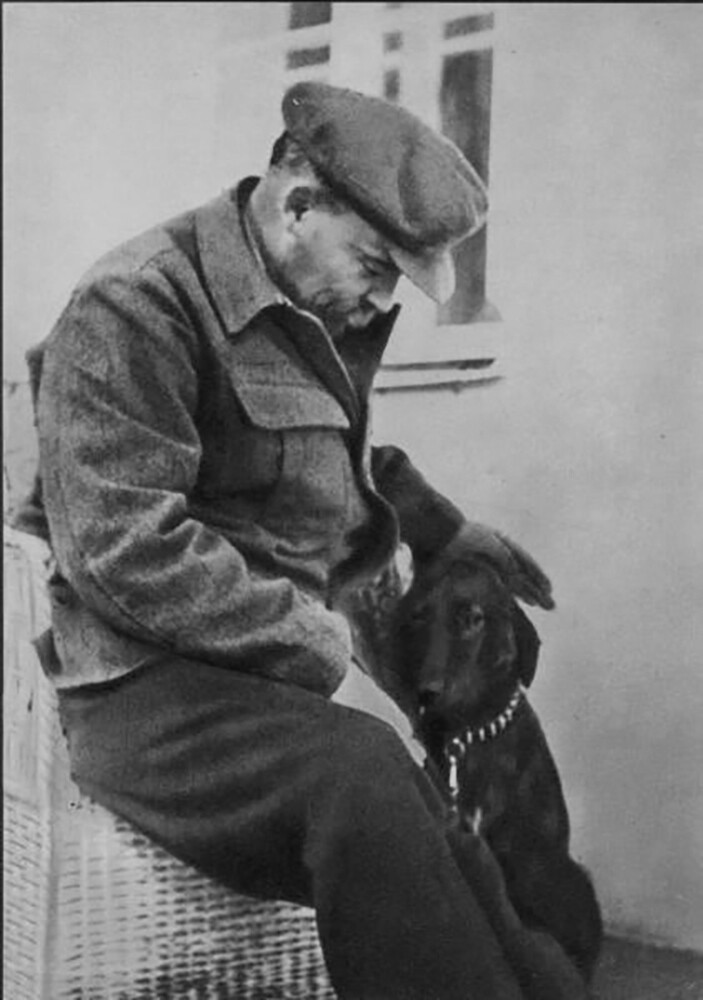
Vladimir Lenin and Ayda the dog, 1922
MAMM/MDF/russiainphoto.ruThere are also several photos of Lenin holding a cat - they were widely circulated many years after his death to create the image of the amiable and kindly "Grandpa Lenin". According to some sources, the cat in the photo was named Vasily…
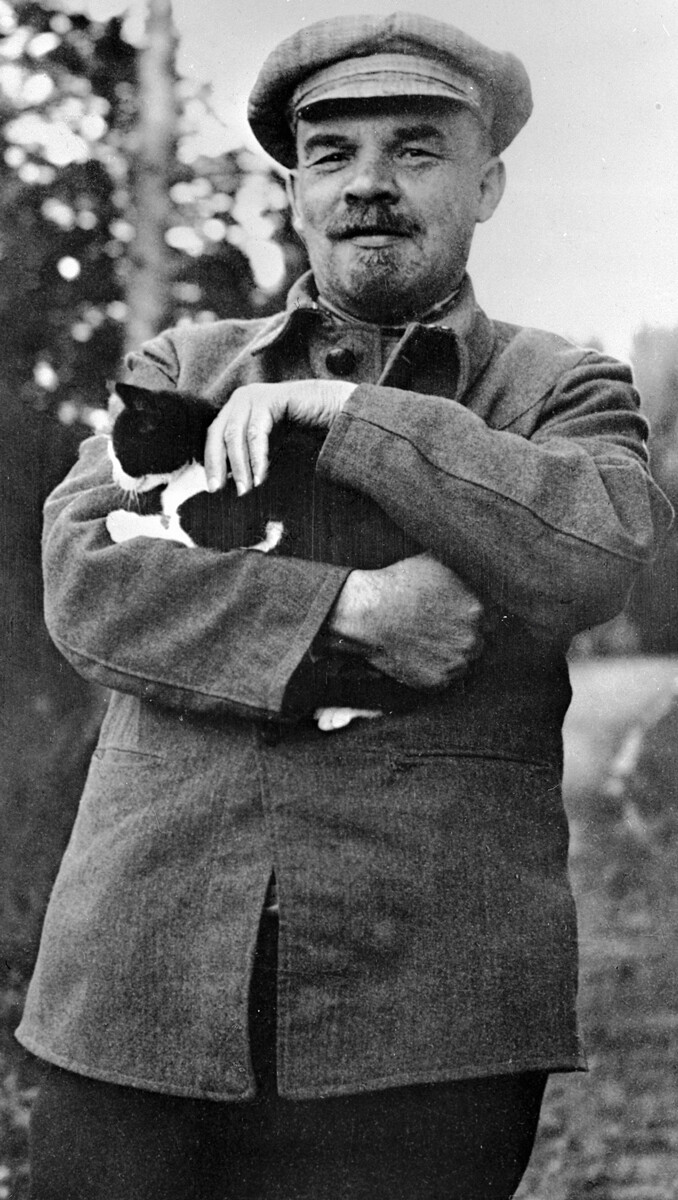
Lenin in the Gorki estate, 1922. Picture taken by his sister, Maria Ulianova
SputnikIt is known that Stalin also liked dogs. There is a popular tale about how, in exile in Siberia along with Yakov Sverdlov, Stalin befriended a dog and named it Yashka (and Sverdlov was not happy about it, ‘Yashka’ being an informal diminutive of ‘Yakov’). Stalin let the dog lick his plate clean after meals.
Many animals were given to Stalin as gifts. For example, after the war, Nikita Khrushchev gave the Great Leader a squirrel and, subsequently, Stalin began breeding squirrels at his Blizhnyaya Dacha residence on the outskirts of Moscow and was said to have personally fed them nuts.
There is also a legend that a bear lived at Stalin's dacha - apparently a lost bear cub brought to the dacha by Stalin's guards (according to another account, it was a gift presented to Stalin that ended up being passed to the guards). Stalin came to look at it several times, but then forgot all about it, but they hesitated taking it to a zoo. The bear lived another few years in a special pen, until the Great Leader was reminded of it - and was greatly surprised. By all accounts, the animal, now fully grown, had to be sent to a zoo, after all.
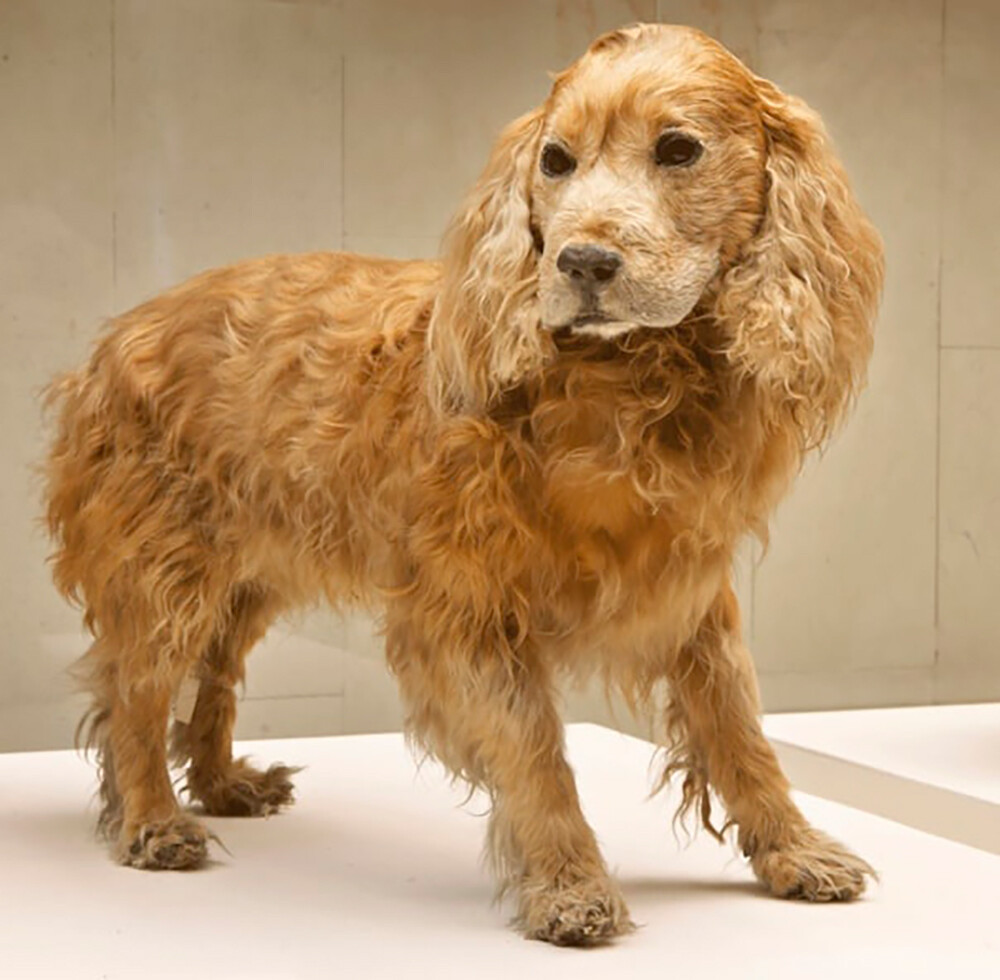
Joseph Stalin's cocker spaniel.
State Darwin MuseumOn Stalin's birthday in 1949, the Queen of the Netherlands (another version of the story says it was a Belgian farmer or miner) presented Stalin with a red cocker spaniel called Milka. The Great Leader gave the dog to his son Vasily, a keen hunter. Milka has since been taxidermied and is on display at Moscow's State Darwin Museum.
It’s claimed that Nikita Khrushchev was the first owner of a chihuahua in the USSR. Cuban leader Fidel Castro presented him with two small chihuahua puppies, after which dogs of this breed started appearing all over the Soviet Union.
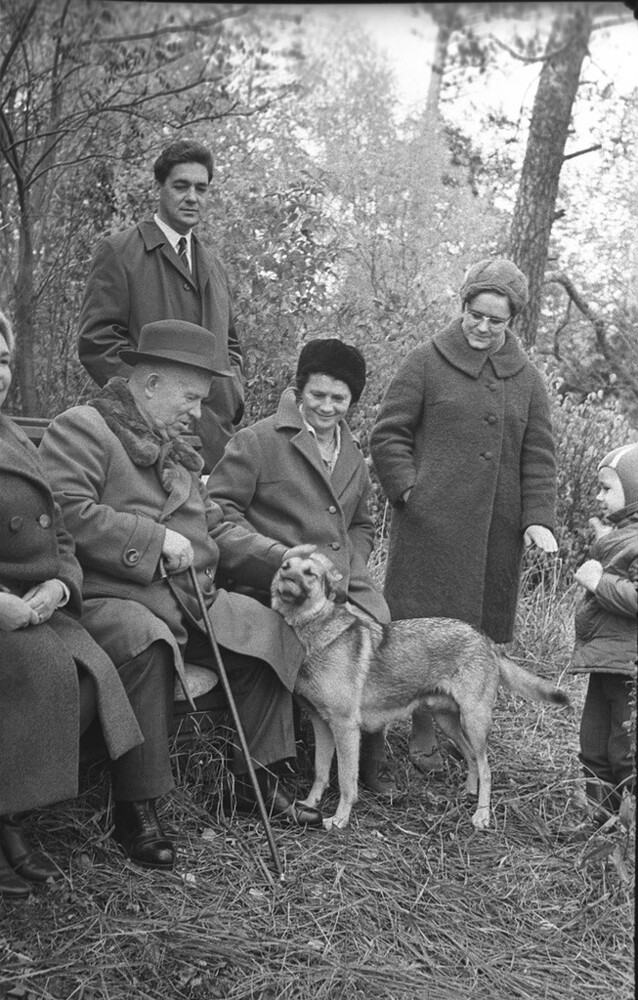
Nikita Khrushchev with family
Boris Kosarev/russiainphoto.ruKhrushchev also set a trend for another breed - the English poodle. He was given a snow-white specimen by none other than the Queen Elizabeth II.
In retirement, Khrushchev kept his cherished shepherd dog named Arbat at his dacha.
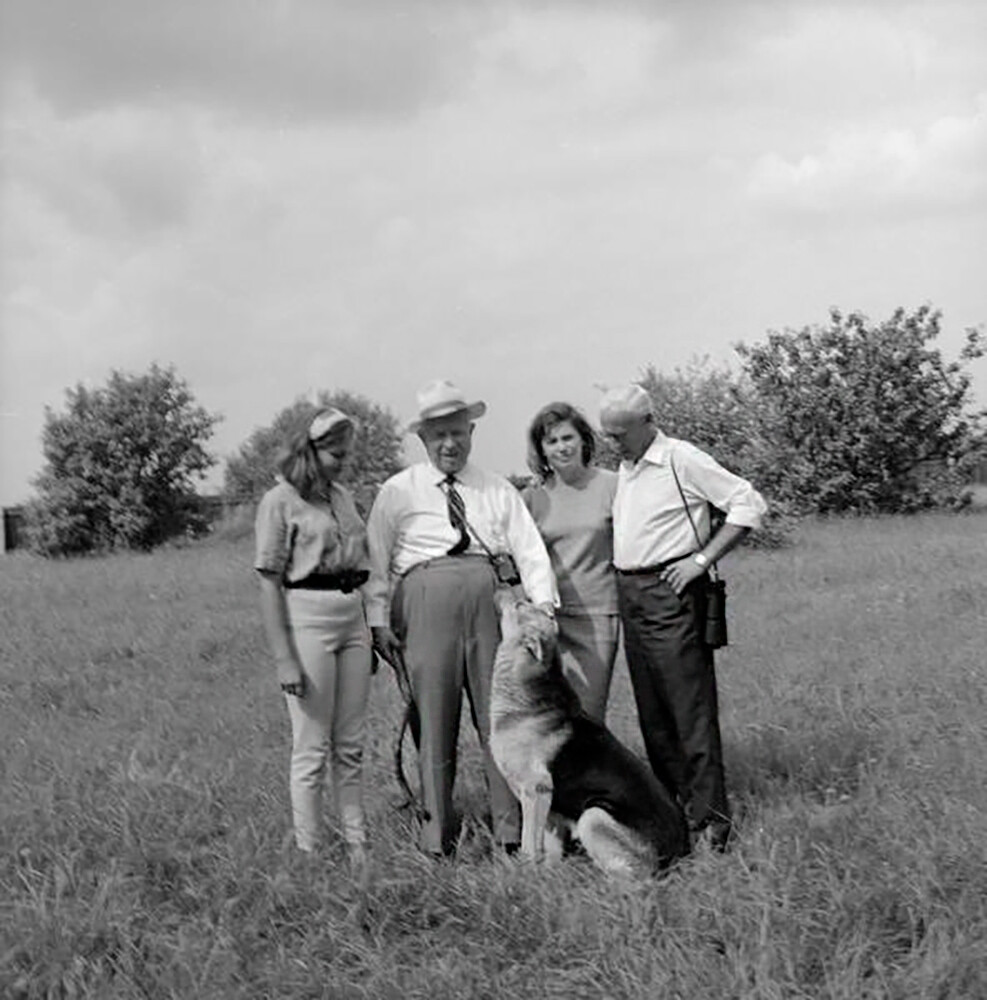
Nikita Khrushchev on walk with cameraman Roman Karmen and his family
Lev Petrov/MAMM/MDF/russiainphoto.ruAfter his favorite pet died, the former general secretary got himself a mongrel and named it Belka (like the space dog). When his children asked him to get a pedigree dog, he refused, saying: "Mongrels are cleverer, more loyal and less demanding. What need do I have of a dimwit dog with a fancy lineage?"
During an official visit to India in 1969, Brezhnev met the Tibetan Dalai Lama. The latter presented the Soviet general secretary with a black cat and told him that if it ever started behaving strangely, it meant that Brezhnev was in danger. Numerous legends, subsequently, circulated about the pet cat, which was named Lama, and how it allegedly “saved” its master's life three times.
On each occasion, just as Brezhnev was about to go out, the feline scratched at the door and jumped on his chest or tugged at his trousers with its teeth. Each time, Brezhnev, remembering the prophecy, made small adjustments to his plans or canceled them altogether - and three times he evaded disaster: two assassination attempts and also a bad accident.
Once, Brezhnev failed to heed the cat's "advice" and went out as normal, but it ran out and hurled itself under the wheels of a vehicle. According to legend, after this, the general secretary's health started to drastically deteriorate.
It might be added that, in the 1970s, U.S. President Jimmy Carter presented Brezhev with a Labrador dog. The general secretary named it Druzhok, but, according to various accounts, they didn't particularly take to each other.
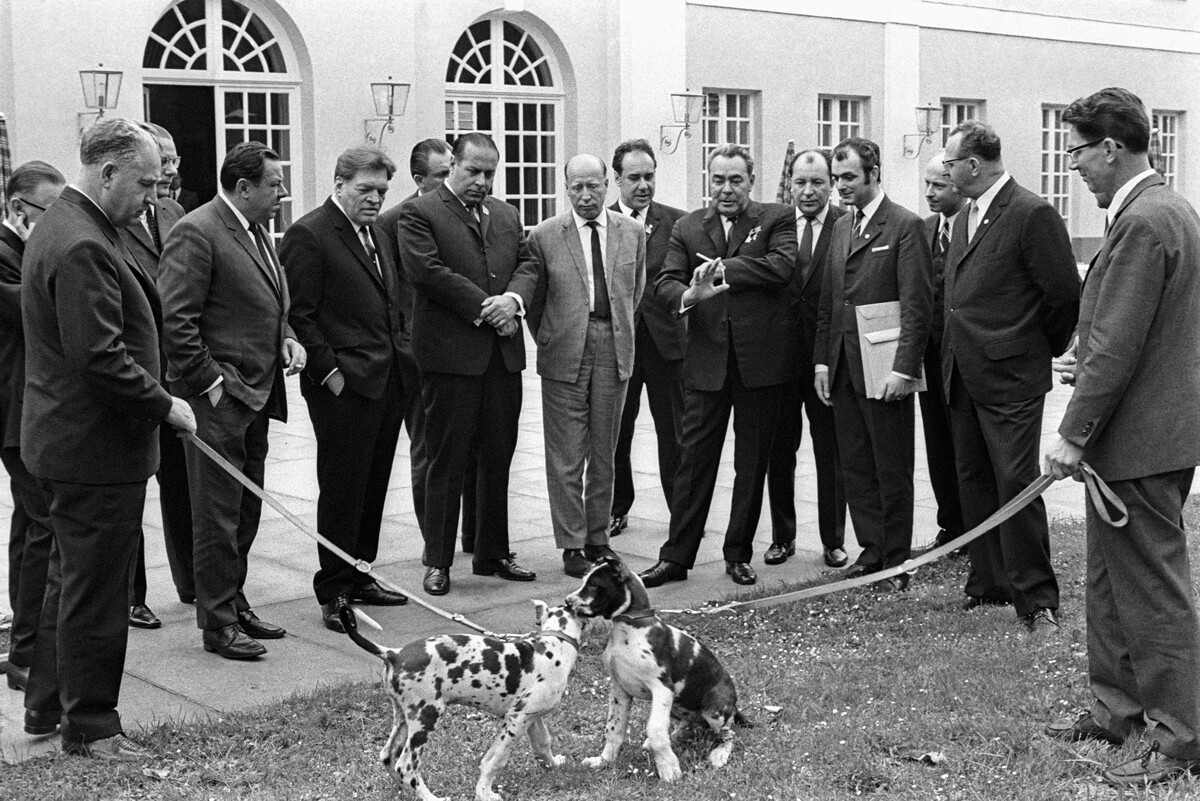
Leonid Brezhnev (pictured in the center) in East Germany
Vladimir Musaelian/TASSIn the last years of his life Mikhail Gorbachev had a favorite cat called Willy. There is a video in which the first president of the USSR is portrayed stroking his cherished pet.
In addition, the cat was immortalized in a painting by artist Nikolai Sednin.
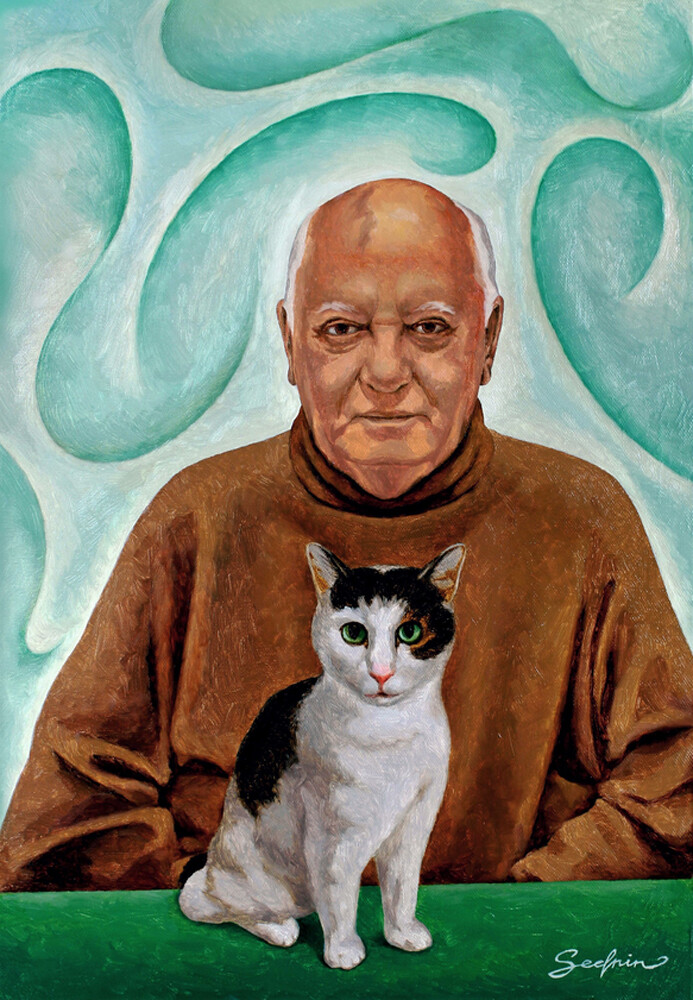
Nikolai Sednin. Mikhail Sergeyevich Gorbachev and his favorite cat Willie, 2018
(CC BY-SA 3.0)There is a popular legend that Willy got into a fight with Dmitry Medvedev's cat Dorofei (and won).
Dear readers,
Our website and social media accounts are under threat of being restricted or banned, due to the current circumstances. So, to keep up with our latest content, simply do the following:
If using any of Russia Beyond's content, partly or in full, always provide an active hyperlink to the original material.
Subscribe
to our newsletter!
Get the week's best stories straight to your inbox